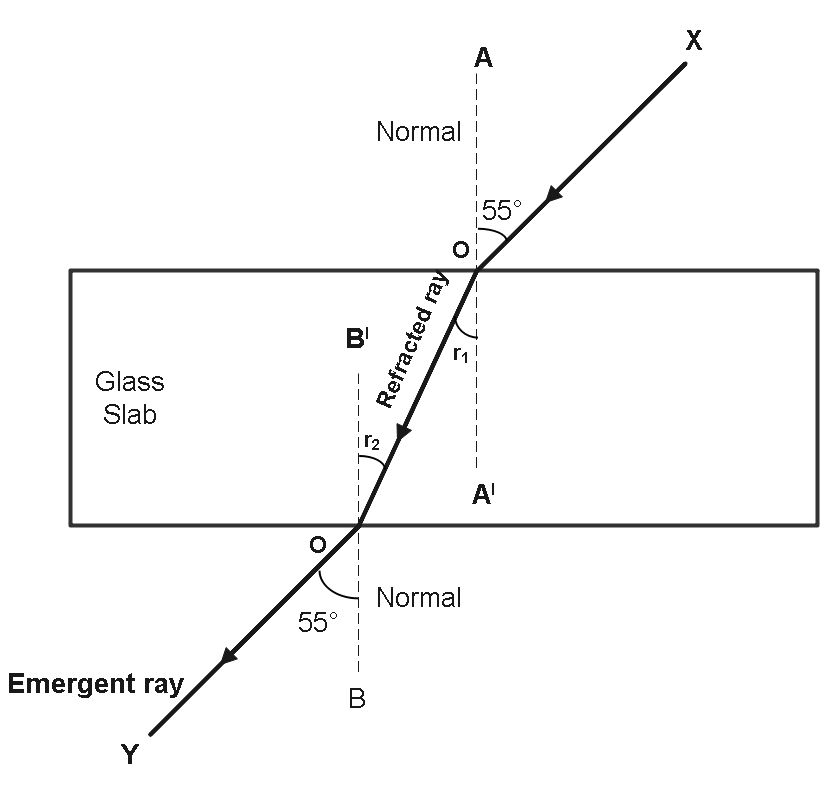
In an experiment with a rectangular glass slab, a student observed that a ray of light incident at an angle of
Answer
405.6k+ views
1 likes
Hint: This question is observation based according to the question we have drawn the figure and after labelled it. And then we will assign the value to the angle of refraction and angle of emergence.
Complete step by step solution:

In this diagram,
The angle of incidence for first surface,
The angle of incidence for second surface,
So, the angle of refraction at first surface
As, the emergent ray is parallel to the incident ray, the angle of emergence must be equal to the angle of incidence, i.e.,
Hence,
The angle of refraction is,
And, the angle of emergence,
Note:
The incident ray, the refracted ray and the normal to the interface of two transparent media at the point of incidence, all lie in the same plane.
The ratio of sine of angle of incidence to the sine of angle of refraction is a constant, for the light of a given colour and for the given pair of media. This law is also known as Snell’s law of refraction.
Complete step by step solution:

In this diagram,
The angle of incidence for first surface,
The angle of incidence for second surface,
So, the angle of refraction at first surface
As, the emergent ray is parallel to the incident ray, the angle of emergence must be equal to the angle of incidence, i.e.,
Hence,
The angle of refraction is,
And, the angle of emergence,
Note:
The incident ray, the refracted ray and the normal to the interface of two transparent media at the point of incidence, all lie in the same plane.
The ratio of sine of angle of incidence to the sine of angle of refraction is a constant, for the light of a given colour and for the given pair of media. This law is also known as Snell’s law of refraction.
Latest Vedantu courses for you
Grade 11 Science PCM | CBSE | SCHOOL | English
CBSE (2025-26)
School Full course for CBSE students
₹41,848 per year
Recently Updated Pages
Basicity of sulphurous acid and sulphuric acid are

Master Class 12 Economics: Engaging Questions & Answers for Success

Master Class 12 Maths: Engaging Questions & Answers for Success

Master Class 12 Biology: Engaging Questions & Answers for Success

Master Class 12 Physics: Engaging Questions & Answers for Success

Master Class 4 Maths: Engaging Questions & Answers for Success

Trending doubts
Give 10 examples of unisexual and bisexual flowers

Draw a labelled sketch of the human eye class 12 physics CBSE

a Tabulate the differences in the characteristics of class 12 chemistry CBSE

Differentiate between homogeneous and heterogeneous class 12 chemistry CBSE

Why is the cell called the structural and functional class 12 biology CBSE

Differentiate between insitu conservation and exsitu class 12 biology CBSE




